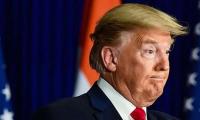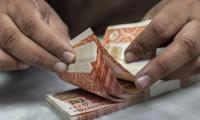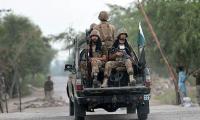The government of the PTI – just having completed its two years in power – has drawn the attention of many, mostly its critics, who are busy evaluating its performance in various fields, and the promises it had made in its manifesto.
One interesting aspect could be to look forward to what lies ahead in the next two years of the government, based on the its performance in the past two years. The China-Pakistan Economic Corridor (CPEC) is one area where the PTI government can be questioned as it has not come out thumping its chest on this issue.
Is it a lack of interest in the corridor or do they have nothing to show off? There is also not much talk in the print, electronic or social media by party supporters about CPEC and the dividends it can offer to the people due to the ‘able’ PTI leadership.
Originally valued at $46 billion, the value of CPEC projects was worth $62 billion, as of 2017, and increasing. There is a perception that ever since the PTI government came into power CPEC has been put on the backburner – or so some of the PTI critics would like to believe. Is the US arm-twisting the Pakistan government, or is it the IMF pressure, or is Covid-19 proving to be the last straw? Or is it just propaganda while CPEC projects move forward with full speed?
Still, looking at the government of Pakistan’s website of CPEC is impressive and instructive at the same time; impressive because it shows a massive blueprint of planning and development for a struggling country like Pakistan, and instructive because one learns that only the highest level of commitment can make the projects see the light of day and benefit the people of Pakistan amid all the challenges. The initial hype that CPEC created in its start in April 2015 made people nurse expectations and at the same time having had to trust the government of the PML-N at that time.
The very first expectation from CPEC was and is that it would have a trickle-down effect resulting from the economic and development activity of Phase I, which mainly centers on building physical infrastructure, energy projects and ports, etc. Has it come up to the people’s expectations so far?
Also, the development of the Gwadar Port stands as one of the biggest components of CPEC. There should be a way of looking at what change/s the operationalisation of the port has brought in the life of not just the local people of the area but the rest of Balochistan. Are they better off today than they were, say, two years ago? Do they have access to clean potable water, basic health facilities, quality education, and employment opportunities? Can they see and feel their lives changing for the better? And, above all, do they have hope?
After its two years in office, the PTI government seems to have realised that not everything is hunky dory as far as CPEC is concerned. The chain of CPEC authority command from civil to military in November last year also made headlines. Speaking at a webinar, recently, China-Pakistan Economic Corridor Authority Chairman Lt-Gen (r) Asim Saleem Bajwa, assured the people that the government would ensure that CPEC brings dividends to the people as it enters its second phase. He also assured the people that the Gwadar Port will soon be completed, bringing prosperity to the remote regions of Balochistan. Only time will tell if this happens, but one should hope for the better.
While the leadership of the PTI government claims it will not leave the proverbial stone unturned, the critics of CPEC want to contest the claim.
CPEC is projected as one of the key parts of China’s Belt and Road Initiative (BRI) and branded as a hallmark of the Pakistan-China relationship, pointing to the country’s potential as a hub for regional trade. While there is no denying the possible fruits of CPEC, questions about the approach in its handling and transparency have been raised from time to time.
The current government does not seem to have successfully addressed the queries and criticism about CPEC during its last two years. By some, the project has been labelled as a debt trap for Pakistan as institutions like the World Bank have made suggestions about the BRI for improvements in transparency, especially about debt and compliance of social and environmental standards.
In May this year, our Foreign Office had to issue a statement saying that CPEC was contributing to the national development in a transparent manner and issues in the execution of the project were bilaterally addressed by Beijing and Islamabad. The statement came after senior US diplomat for South and Central Asia Alice Wells had criticised the BRI and its flagship CPEC project.
Amid all this, we were assured that Covid-19’s impact on CPEC projects in Pakistan would be within “controllable range”. It was reported that, according to China’s Ministry of Foreign Affairs, about 20 percent of projects under China’s BRI have been “seriously affected” by the coronavirus pandemic.
Would it be going too far for the people of Pakistan to garner hopes from the ‘people-centric’ second phase of CPEC that focuses on industrialisation, socio-economic development, agriculture, modernisation and tourism? An estimate says the BRI could lift about 32 million people out of moderate poverty conditions in different parts of the world. Do we have such an estimate about Pakistan in view of CPEC? Is there a tangible way to see how CPEC has benefitted the people living below the poverty line? Can it ensure poverty alleviation and sustainable growth? Ideally, Pakistan should be able to reap the benefits from the China-Pakistan Free Trade Agreement (FTA) and CPEC to fight inflation and poverty.
In the end, it all boils down to the people of this country, especially the people of neglected areas of Khyber Pakhtunkhwa, Sindh, and Balochistan. Are they getting what is already theirs? Will poverty and haplessness ever leave them, despite CPEC?
The writer is assistant editor at The News on Sunday.
Email: athernaqvi@gmail.com.
Twitter: @Syed_Ather_Ali
An aeroplane of the national flag carrier of Pakistan is seen in this file photo. — AFPWhile Pakistan considers...
Representational image of a graph depicting various variables. — APP/FileInitiated by the centre and fiercely...
In this picture taken on April 16, 2023, people throng a market area during shopping in Lahore. — AFPOne of the...
Honour crimes also target men. In Sikandar Ali Lashari vs The State, SHC upheld conviction passed by ATC for honour...
If Sindh earmarks Rs20 million per police station, it will cost only Rs10 billion to make them effective first...
A complex and difficult policy environment seems to be highlighted by US’s recent application of sanctions on...







